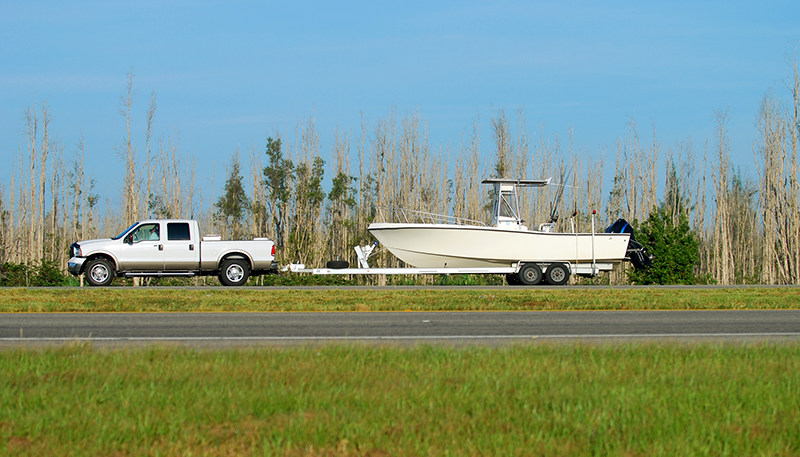For your safety and others on the highway, there are important things to always be conscious of, whether you're on back roads or the interstate. Towing a boat behind your vehicle will create both major and minor differences when driving.
As with boating itself, the secret to successful driving with a boat in tow is a combination of preventive maintenance, awareness of your auto’s limitations, and your personal experience.
The first few times may be intimidating, but as they say, practice makes perfect and can help prevent a wreck. Maybe even take a quick trip around the block before you head out to the highway.
Highway Safety with Your Boat Trailer
Accelerating will take longer, the same as it will when coming to a stop— no matter how well you think your trailer is equipped. That means giving yourself added space when accelerating to pull out into traffic or pass another vehicle.
In addition, you want to add distance between your vehicle and the one ahead of you. When it comes time to slow down or stop, you need to have given yourself enough room to do so without excessive, last-moment braking.
Additional Tip: Downshift to a lower gear instead of riding your brakes when going downhill to allow the engine to help keep your speed in check.
Avoid Passing Whenever Possible
Passing also requires factoring-in the weight and length of your vehicle-and-trailer combo. It's going to take you much longer to get up to passing speed, and you'll require more space ahead of the vehicle you are passing to safely return to the cruising lane, along with needing a greater distance to slow down.
The best and safest advice on passing while towing a boat and trailer is simple; just don't. The potential risks just aren't worth ruining your lake day, bank account, or much, much worse.
Always Make Wide Turns
Turning with a boat trailer in tow is different, too. Your extended two-piece rig will not corner as sharply as does the vehicle alone. Because your trailer's wheels are drawn closer to the inside of a turn than the wheels of your tow vehicle during the maneuver, the trailer's tires will hit the curbs (or worse) unless you compensate for the extended load.
Always take the turn wider from the start. When approaching a turn, position your tow vehicle on the outside of the lane to allow the rig to execute a wide turn. Don't cut your steering wheel until your vehicle's rear wheels have passed the inside curb.
Don't Forget the Wind Factor
Wind is another factor that influences a towing rig far more than a vehicle alone. Whether from an air wave created by a passing tractor trailer or a blow from Mother Nature, your rig's extended profile is larger and therefore affected more by any sudden shift in the wind.
Large vehicles develop a wave of high-pressure air in front of them and a low-pressure area behind as they speed down the highway. Stay ready for the sudden shifts, with both hands on the wheel, and prepared to compensate by steering a bit left then a bit right during the passing process, it can be a startling event.
If the wind is really howling, you should consider pulling over at the next rest stop and tucking your rig among those of veteran truckers who will be doing the same until the weather stabilizes.



